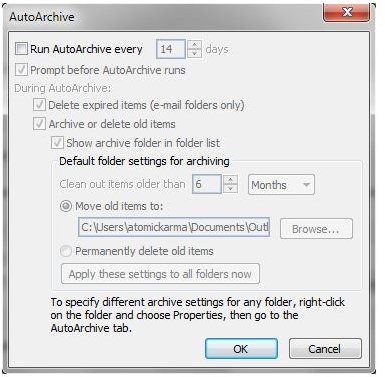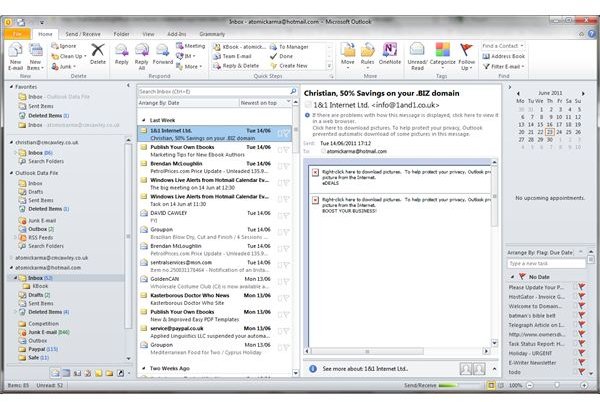What to Do if Outlook Is Not Archiving Unless Setting the Date in the Future
The Benefits of Archiving
Keeping an archive of your Outlook emails can be quite important, particularly in a busy corporate environment where you might have a limited Microsoft Exchange mailbox.
In this situation, your mailbox limit might be 50 MB but the amount of emails and attachments that you deal with in a month or so far exceeds this total. As such, archiving messages so that they are saved locally and can be deleted from the active mailbox is a good option, and will help you to keep your mailbox size within the limit.
However, some users run into issues when using the archiving feature for the first time, finding that it presents unusual results. This is largely due to the way in which archiving works in Outlook, with the various settings and conditions that are used to manage how and when archiving returns a little unclear at times. A prime example of this is when Outlook doesn’t allow archiving without setting the date in the future.
Why Archiving Your Emails is Important
Keeping copies of your messages is a key element of managing an email client, which is why knowing how to archiving them is so important. By keeping copies you can refer back to previous dates, discussions, and instructions and basically provide yourself with background and information to various work-related subjects.
With a well-maintained archive of emails you can keep track of what was requested of you and when, and this should all tie up with your general work tasks. Without an archive of emails, as soon as something is deleted, it is gone, which means you may have to request messages to be re-sent (assuming they haven’t been discarded by the sender).
Thanks to the way in which archived messages are stored and indexed, by archiving emails you can find a deleted message in just a few seconds, thereby avoiding the scenario described.
Using the AutoArchive Feature

By default, AutoArchive is enabled when Outlook is first run (and still should be unless disabled by your administrator) and therefore should run every 14 days. You can change the interval by opening File > Options > Advanced > AutoArchive > AutoArchive Settings and altering the number specified in Run AutoArchive every n days, clicking OK when done.
Messages added to the archive are added to a PST file, the common Microsoft Outlook index of emails, calendar information and contacts.
With the AutoArchiving settings you can also specify which folder to use as the archive store, via the Move old items to: box. Additionally, older items can be removed from the archive, using the Clean out items older than option. If you prefer to keep older items in your archive for as long as possible, alter this setting.
If you have been unable to find the archive folder on your computer, this might be because Outlook has hidden it. The Show archive folder in folder list check box toggles this on and off, so if you cannot see the folder specified under Move old items to: while in the normal Outlook folder view, this is why.
Microsoft Outlook Archiving Quirks
While Outlook should work as explained above, you might have noticed a few oddities in the way that your emails are archived, such as Outlook not archiving them unless the date of a message is set in the future.
This probably won’t affect you in most cases, but if the email in question has been sent, received or modified on a system with an incorrect date setup in the operating system, then when the message arrives on your computer there is a chance that it will not be included in the archive program. If this is the case then you will need to be wary of bulk deleting of messages that you expect to have been automatically archived.
Unfortunately there is no way around this particular Outlook quirk. The Sent date is applied by the sending computer or mail server, and the Received date from the header that is created when the email is routed to your computer. The Last Modified date, meanwhile, is set when you perform an action on the message such as moving it to a new folder.
If any of these dates are out of sync on the host machine, then this will prevent the item from being archived, as AutoArchive only works on messages with dates set in the past, and the tool checks all three of the date types listed above.
There isn’t really an awful lot you can do about this problem, other than reporting it to the administrator of the email server concerned and hoping that that they are able to resolve it.
References
Author’s own experience.
Screenshots by author.
